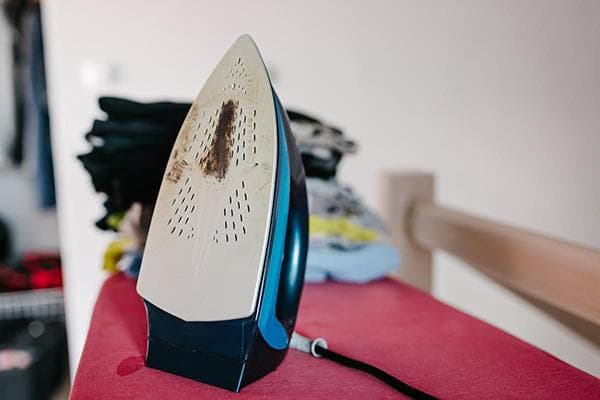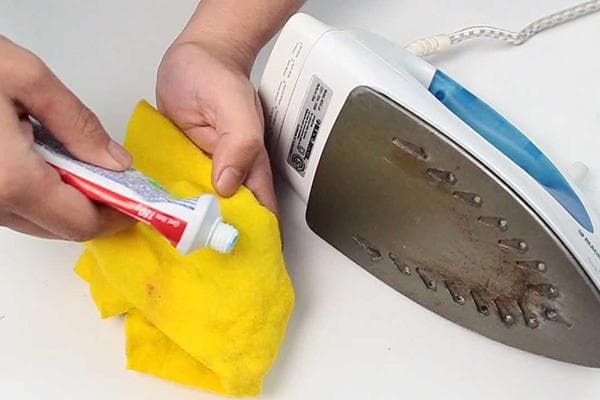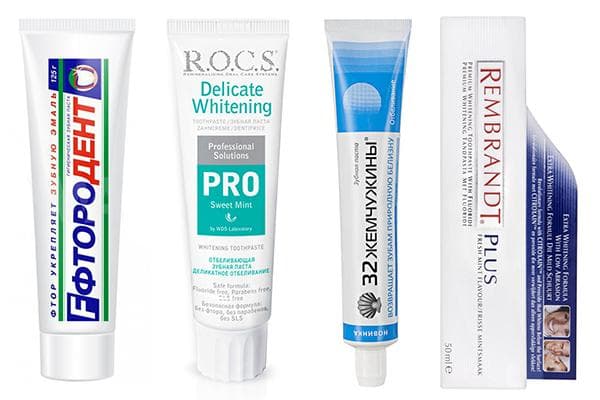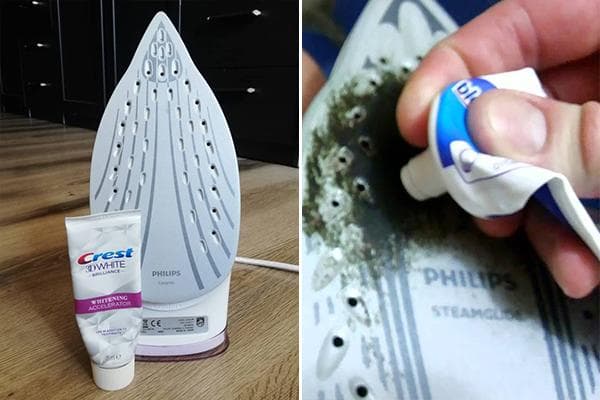What do teeth and an iron have in common: clean the device with toothpaste until it shines
All household appliances used in the household require regular maintenance. A device for ironing clothes is no exception, because its working surface with traces of scale and dirt can cause damage to the fabric. Incredibly, you can clean your iron with toothpaste. An inexpensive and accessible product will cope with this problem no worse than store-bought sprays and pencils. The main thing is, depending on the material of the sole, choose the composition suitable for cleaning and follow the instructions.

Causes of sole contamination
The modern iron is equipped with a self-cleaning function, and its platform has a non-stick coating with improved glide on different types of fabrics. Despite this, even the most careful housewives have situations that leave scale or other contaminants on the soles.
Especially often the sole gets dirty for the following reasons:
- the ironing temperature mode is incorrectly selected, as a result of which the fibers of the material melt and remain on the surface of the platform;
- when working with non-woven or dublerin, glue particles fall on the sole of the iron, accumulate and turn into carbon deposits;
- long-term use of the device without cleaning;
- Unfiltered hard water is poured into the steamer.
It is not necessary to burn through the material to form carbon deposits.Particles of synthetic fibers will firmly stick to the platform even with low overheating, and after some time a black spot will be clearly visible in this place, which will require a lot of effort to remove.
To solve the problem, you can use regular toothpaste. This product will carefully remove plaque, scale, carbon deposits from synthetic fibers and white stains from too hard water.
Why can you clean your iron with toothpaste?
The main purpose of toothpaste is to remove plaque accumulated on the surface of the enamel, which over time can turn into tartar. Therefore, many compositions, especially bleaching ones, include abrasive substances that have increased hardness and are used for polishing various materials.
Coarse abrasives include baking soda, calcium carbonate, calcium phosphates and aluminum oxide. These substances are more suitable for cleaning irons with metal and steel soles. If the working surface of the device is made of Teflon, it is not recommended to use abrasive substances. Otherwise, the appearance of tiny scratches is inevitable, which will further provoke burning of the material.
Specialized iron cleaning products use calcium urea (urea) and organic acids. Such compositions can be purchased at any hardware store, and they cost no more than toothpaste. Therefore, a reasonable question arises about the advisability of using paste as a cleaning agent.
The fact is that not everyone in the household has a special pencil at the most crucial moment.In addition, these means for cleaning the iron from dirt and carbon deposits consist of chemical components, the safety of which no one can guarantee. If a pencil comes into contact with a heated platform during cleaning, toxic substances may be released and an unpleasant odor may appear that can cause an allergy attack.
The conclusion suggests itself: toothpaste containing urea is suitable for cleaning a Teflon-coated iron. If the paste contains one of the above abrasives, it can only be used on steel and metal surfaces.
What pastes are best for cleaning an iron?
To clean the working surface of the iron from scale and carbon deposits, it is better to take bleaching pastes with a high percentage of urea and organic acids. Cheap pastes with abrasive substances are not suitable for devices with Teflon coating.
- "REMBRANDT plus". A product for cleaning and whitening teeth from an American manufacturer contains carbamide peroxide and monofluorophosphate as active ingredients. Price – 400 rubles.
- SPLAT extreme White – a specialized product made in Russia. Active ingredients: silicon dioxide, carbamide peroxide with sodium fluoride. Price – 155 rubles.
- ROCS PRO. Contains calcium glycerophosphate, carbamide peroxide. Price – 287 rubles.
- "32 pearls". This product uses calcium carbonate as an abrasive. Price – 114 rubles.
- "Cedar Balsam" Whitening paste from a domestic manufacturer with calcium carbonate. Price – 70 rubles.
- "Blue Pearl". Whitening paste with citric acid salt. Contains a complex of organic acid salts (sodium citrate and calcium carbonate). Price – 96 rubles.
- "New Fluorodent". Calcium carbonate and sodium bicarbonate are used as abrasives. The combination of these components provides effective cleansing and whitening. Price – 24 rubles.
It may not be advisable to buy expensive paste to clean the surface of your iron. But compositions with urea act more carefully and effectively than those containing only coarse abrasives.
How to clean an iron with toothpaste?
To work, you need to prepare a brush with soft fine bristles, cotton pads and toothpaste.
Follow the instructions:
- You need to slightly warm up the soleplate of the iron, setting the temperature to minimum. The metal surface should become slightly hot so that you can touch it with your hand without getting burned.
- Disconnect the iron from the electrical network.
- Apply toothpaste to a brush (you can use a toothbrush) and gently rub the stained areas on the sole.
- After treating the stains, you can begin cleaning the entire surface. To do this, apply a layer of paste to the work surface with a brush, distribute it evenly over the area of the sole and leave for half an hour for the product to take effect.
- After the allotted time has passed, wash off the remaining cleaning agent by wiping the metal with a cotton pad soaked in warm water.
- If particles of toothpaste clog the steam outlet holes, they must be removed with a toothpick or cotton swabs. After this, you should heat the iron and release some steam without directing it at things. Along with the steam, grains of toothpaste that may have remained there will also escape from the holes.
So, many proven products have been developed and produced to clean the soleplate of the iron from scale and carbon deposits. But if you don’t have a special pencil at hand, you can use toothpaste and get a very good result.



